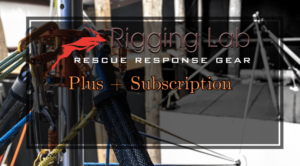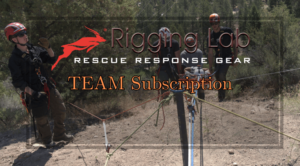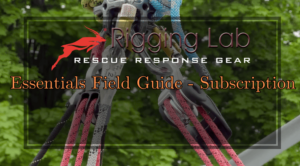Essential REMS Gear for Wildland Fire Rescues
The Right Tools for the Toughest Rescues
When a firefighter goes down in the remote, unpredictable world of a wildland fire, there’s no time to waste. Rapid Extraction Module Support (REMS) teams are the safety net—the ones who go where no one else can, armed with specialized rescue gear designed for the toughest conditions.
Every piece of equipment they carry has one purpose: to get in, get the firefighter out, and get them home safely. But the job isn’t easy. From steep ravines to dense forest canopies, REMS teams need to be fast, mobile, and prepared for anything.
Let’s take a closer look at what makes these teams so effective—the gear that turns them into life-saving forces in the fireline.
and… What is REMS?
Rope Rescue Equipment: The Lifeline in Rugged Terrain
When a firefighter is trapped or injured in steep, rocky, or inaccessible terrain, REMS teams rely on high-strength rope systems to bring them to safety. Their rope rescue kit is lightweight but powerful, built for quick deployment in high-risk scenarios.
- 1,500 feet of rope (9.5mm to 12.5mm diameter) – Strong enough for vertical rescues but compact enough to carry deep into the wild.
- Descent control devices – Including eight plates, ATCs, ATS, totem racks, and break bar racks for precision lowering.
- High-efficiency multipurpose rope rescue devices – Because sometimes, speed is everything.
- Carabiners (minimum 22) – The unsung heroes of any rope system, keeping everything connected.
- Prusik-minding pulleys (single and double) – For smooth, controlled extractions.
- Prusiks (traditional, sewn, eye-to-eye) – Small but mighty, these create backup safety in critical situations.
- Webbing, slings, and accessory cords – Versatile tools for anchoring and securing loads.
- Edge protection kit – Because sharp rocks and rough terrain can chew through rope faster than fire itself.
- Class II or III harnesses – Keeping rescuers and patients secure, no matter the angle.
In steep, unforgiving terrain, ropes become lifelines—literally. Every REMS team member is trained to deploy, manage, and execute complex technical rescues on the fly.
Patient Transport: When Every Second Counts
Wildland environments don’t have ambulances waiting nearby—sometimes, REMS teams have to move an injured firefighter miles before reaching safety. That’s why every piece of transport equipment is designed for speed, stability, and adaptability.
- Roll-up rescue stretcher – Lightweight, compact, and easy to carry into tight spaces.
- Collapsible multi-piece basket stretcher/litter – Built for rugged terrain with a pre-rigged hoist system for helicopter extractions.
- Break-away backboard – Essential for spinal immobilization without adding bulk.
- Sleeping bag for patient insulation – Hypothermia can be just as deadly as fire when you’re immobilized in the wild.
- Litter wheel with tire repair kit – Because carrying a 200-pound firefighter over rough ground isn’t always an option.
REMS teams train relentlessly to move patients as fast as possible without compromising safety—because in these environments, time is survival.
Vehicles and Transport: Getting There Faster
When roads don’t exist and the only way in is through ashes, rockslides, and unstable terrain, REMS teams bring their own transportation.
- 4×4 pickup truck – The go-to workhorse for carrying personnel and gear into remote fire zones.
- Utility Terrain Vehicle (UTV) with patient transport setup – Equipped to navigate tight spaces and rugged landscapes where standard vehicles can’t go.
With the right vehicle, REMS teams become mobile rescue units, covering miles of fireline in record time.
Medical Equipment: Life-Saving Care in the Wild
REMS teams don’t just extract firefighters—they provide medical care in some of the harshest environments on Earth. From major trauma to airway emergencies, their Advanced Life Support (ALS) and Basic Life Support (BLS) kits contain everything they need to stabilize patients in the field.
- Tourniquets – Stopping major bleeding before it’s too late.
- Hemostatic wound packing – Because deep, uncontrolled bleeding needs immediate intervention.
- Trauma dressings – For burns, lacerations, and penetrating injuries.
- Compact pelvic binder – Essential for stabilizing serious fractures in rough transport conditions.
- Airway management tools – Including OPAs, NPAs, and endotracheal tubes (ETTs) for ALS teams.
Firefighters depend on REMS teams to be medics, rescuers, and transport specialists all in one—their medical kits reflect that responsibility.
Technical Rescue Tools: Adapting to Every Situation
Wildland fire rescues rarely go according to plan. That’s why REMS teams carry a specialized toolkit designed for whatever the fireline throws at them.
- Pickets or picket systems – Creating anchors in soft or unstable ground.
- Sledgehammer – A must-have for setting anchors and breaking through obstacles.
- GPS devices and flagging – Because getting lost while performing a rescue isn’t an option.
- Mechanical winch (optional) – For moving heavy debris, vehicles, or injured personnel in tough spots.
These tools make the difference between a straightforward rescue and an impossible one.
Personal Protective Equipment (PPE): Staying Safe in the Fireline
Rescuing firefighters in active fire zones is no small feat—REMS team members need to protect themselves while doing their job.
- Wildland web gear with fire shelter – Because even rescuers need an emergency escape plan.
- Hand tools – Versatile and essential for maneuvering through debris and rough terrain.
Without the right PPE, rescuers become victims. That’s never an option.
Optional Equipment: Enhancing Capability in Specialized Rescues
Every wildland fire is different. Depending on the situation, REMS teams might bring additional gear, including:
- Portable generator or inverter – For power supply in remote locations.
- Artificial high directional device – Used in complex rope rescue scenarios.
- Chainsaw with chaps – For clearing fallen trees and debris.
- Battery-powered blower – For decontaminating gear from ash and dirt.
The job is unpredictable—flexibility and adaptability define a successful REMS response.
The Bottom Line: Equipped for Success
In the wildland fire environment, seconds matter. REMS teams don’t just bring gear—they bring expertise, speed, and precision. Their equipment is designed for one thing: getting firefighters out alive.
When the landscape is unforgiving, the air is thick with smoke, and conventional rescue methods fail—REMS teams go in anyway. And they bring the best tools for the job.
Peace on your Days
Lance










